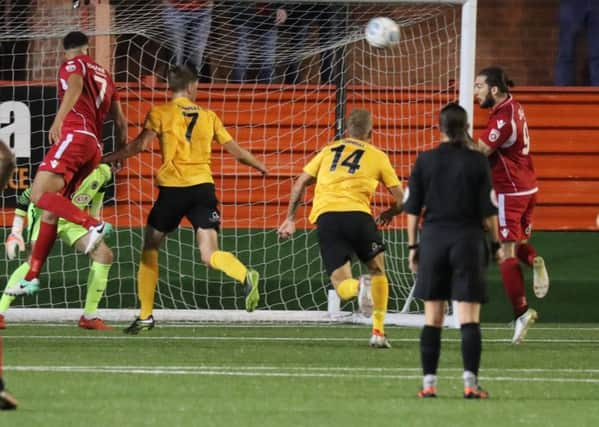BROWNE ON THE BALL: Does English football need more artificial intelligence?


Artificial is undoubtedly good to look at, but it’s never quite got me as excited as seeing a good one sprawled out as Mother Nature intended, a few bumps and imperfections here and there, but laid with a loving touch.
But the older I get, the more willing I am to admit I’m up for a bit of both.
Advertisement
Hide AdAdvertisement
Hide AdThe natural versus artificial football pitch debate has raged on for years, even before Oldham Athletic and Luton Town used to enjoy outwitting the big boys on their bouncy surfaces.
And now it’s back in the headlines once more as Sutton United face a promotion dilemma.
The club famous for FA Cup heroics and pie-eating reserve keeper have a cracking chance of winning promotion to the Football League.
However, they fear that would also signal instant relegation... due to their artificial surface.
Advertisement
Hide AdAdvertisement
Hide AdClubs are allowed 3G pitches in non-league but not, currently, in the country’s top four tiers.
Were Sutton to win promotion and not instantly rip up their £500,000 playing surface and replace it with grass, they could be fined and turfed out, demoted to a level lower than the one they’ve just been elevated from
And that’s just nonsense.
In a way I agree that if a club can play in a professional league then it should be able to employ ground staff to maintain a grass surface which, few will argue, is preferable.
Keeping a pitch looking good and playable is an art and labour of love just as much as it is a job.
Advertisement
Hide AdAdvertisement
Hide AdHowever, professional football is not a level playing field, and why should clubs succeeding and climbing the ladder suddenly hit this glass ceiling.
It seems ridiculous to me that clubs armed with a Sugar Daddy and an extremely short-term plan can force their way up and up by chucking all their cash at the squad while providing minimal spend on infrastructure and pitch, while those clubs with an actual decent playing surface can only go so far.
I would say fair enough if there was a carpet ban on this across the globe.
But this year’s World Cup final will be played on a SISGrass hybrid surface at the Luzhniki Stadium, while Wembley itself has synthetic thread woven into the turf.
Advertisement
Hide AdAdvertisement
Hide AdThese chimeras are good enough for World Cup and Champions League finals, but you can’t use an artificial pitch to host Lincoln City in a league game?
In all honesty, we need more 3G surfaces in this country, not less.
Boston Town have had 10 matches postponed this season due to unplayable surfaces while, even at the top of the National League North, Boston United’s division, Salford City’s pitch was deemed unplayable an hour before they hosted Tamworth at the weekend.
Frustrating indeed for the travelling Lambs fans, but they are just the latest to be hit in the pocket.
Advertisement
Hide AdAdvertisement
Hide AdBack In January fans of Sutton - oh, the irony - had made the 600-mile, 10-hour round trip to Barrow, only for their game to be called off after being passed playable at 9am that very same day.
Having a 3G pitch not only gives games like these more chance of being played, it allows a club’s reserve and youth teams somewhere to play - and train - without the risk of churning up the turf and creating a bog come the final few months of a campaign.
Iceland’s transformation into a top international team has been credited, in part, to the introduction of non-grass, indoor pitches which are, of course, playable all year round.
Once again English football watches on as others succeed, busy wrapping itself up in red tape.